Choosing the Best Customizable Solutions for Awkward Small Laundry Spaces
In many homes, the laundry room is an afterthought—squeezed into whatever space remains after the kitchen, bedrooms, and living areas have been established. Yet this humble workspace handles some of our most essential household tasks. When your laundry area is cramped, oddly configured, or tucked away in a closet or hallway corner, everyday chores can become frustrating ordeals. The good news? With thoughtful customization, even the most challenging laundry spaces can become efficient, functional, and even pleasant to use.
The Challenge of Small Spaces
Whether you’re dealing with a converted closet, a narrow galley, or an awkward L-shaped corner, small laundry spaces present unique challenges. Conventional laundry room designs often assume generous square footage that many of us simply don’t have. Standard-sized appliances can overwhelm tight spaces, while limited storage leads to cluttered countertops and general disorganization.
“The key is to approach small laundry spaces as design puzzles rather than limitations,” says interior designer Mara Jenkins. “Every inch needs to earn its keep, but that doesn’t mean sacrificing functionality or style.”
Key Considerations for Small Laundry Spaces
Before investing in solutions, take stock of your specific challenges and priorities. The most successful small laundry rooms share several design principles:
Maximizing vertical space becomes crucial when floor space is limited. Walls and the area above appliances offer valuable real estate for storage and functionality.
Multi-functional elements eliminate the need for separate pieces. When a surface can serve two or three purposes, you’ve effectively multiplied your available space.
Foldable and retractable components allow you to access functionality only when needed, then tuck it away to reclaim precious space.
Space-saving appliances specifically designed for tight quarters can free up substantial room without sacrificing performance.
Customizable Solutions for Small Laundry Room Problems
Stackable Washer and Dryer Units
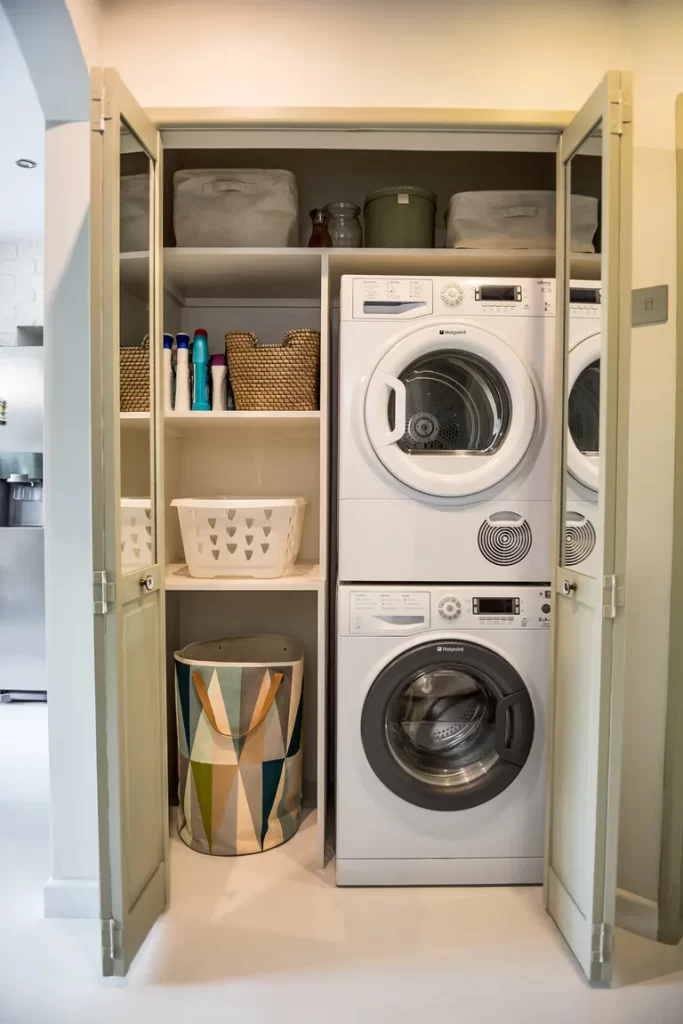
For extremely narrow spaces, stackable units can be transformative. Modern front-loading stacked pairs occupy half the footprint of side-by-side machines while handling the same load capacities. Many manufacturers now offer specially designed stacking kits that ensure secure installation.
When selecting stackable units, pay attention to control panel placement. Some models place all controls on the lower unit, eliminating the need to reach up to the dryer controls.
For even tighter spaces, compact washer-dryer combos that handle both functions in a single unit can be worth considering, though they typically handle smaller loads.
Retractable or Fold-Down Drying Racks

Air-drying delicate items doesn’t have to consume valuable floor space. Wall-mounted fold-down drying racks extend only when needed and disappear when not in use. Ceiling-mounted retractable clotheslines offer another space-saving option, particularly useful above a bathtub or in a basement laundry area.
“I installed a wall-mounted drying rack that folds flat against the wall when not in use,” shares homeowner Elise Morgan. “It’s perfect for air-drying sweaters and lingerie without taking up permanent space.”
Slim, Roll-Out Storage Carts
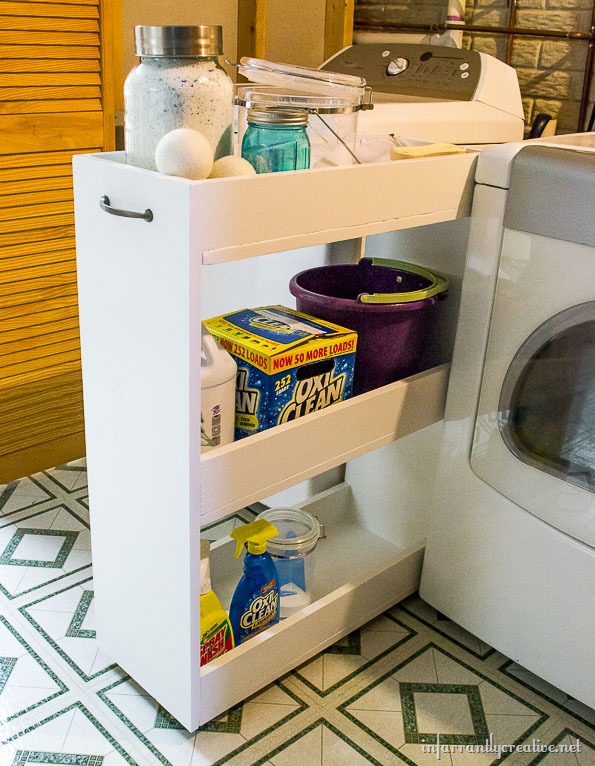
Those narrow gaps between or beside appliances are perfect for slim rolling carts. Just a few inches wide, these carts can hold an impressive amount of laundry supplies while rolling out for easy access. Look for models with tiered shelving to maximize vertical storage within a minimal footprint.
Wall-Mounted Folding Stations
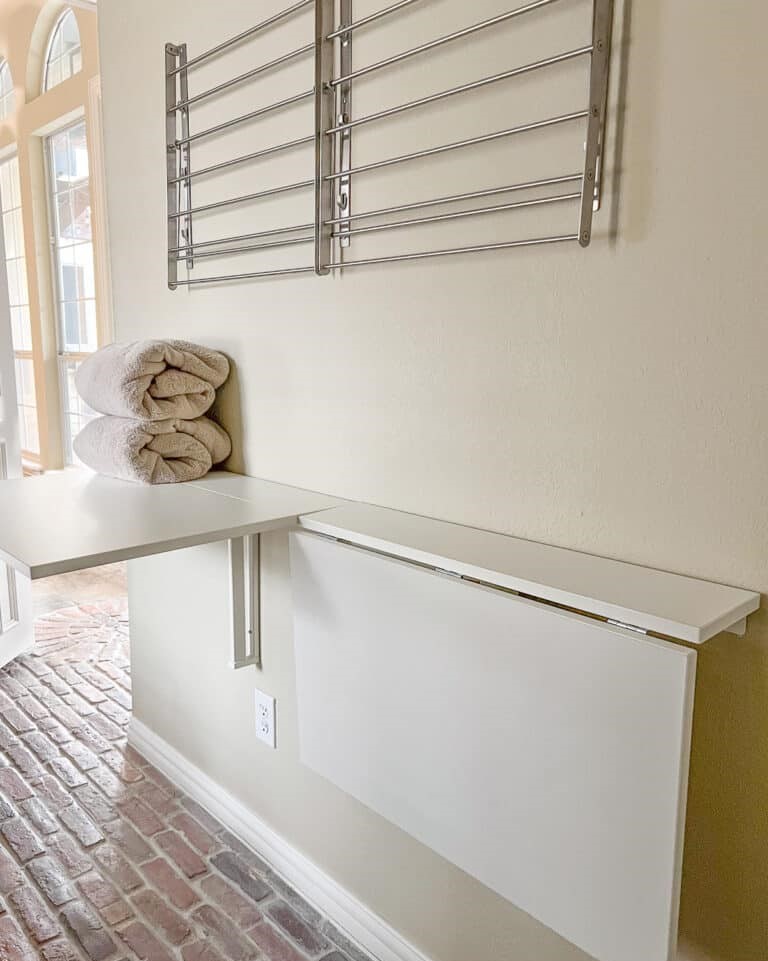
Folding laundry requires counter space—something often sacrificed in small laundry rooms. A wall-mounted drop-down surface provides the perfect solution, offering ample folding space that disappears when not needed. Some designs incorporate additional features like built-in ironing boards or storage compartments.
Over-the-Door and Wall Storage

The backs of doors represent some of the most underutilized space in tight laundry rooms. Over-the-door organizers can hold everything from cleaning supplies to small tools. Similarly, wall-mounted baskets, shelves, and pegboards turn empty wall sections into functional storage zones.
Retractable Ironing Boards
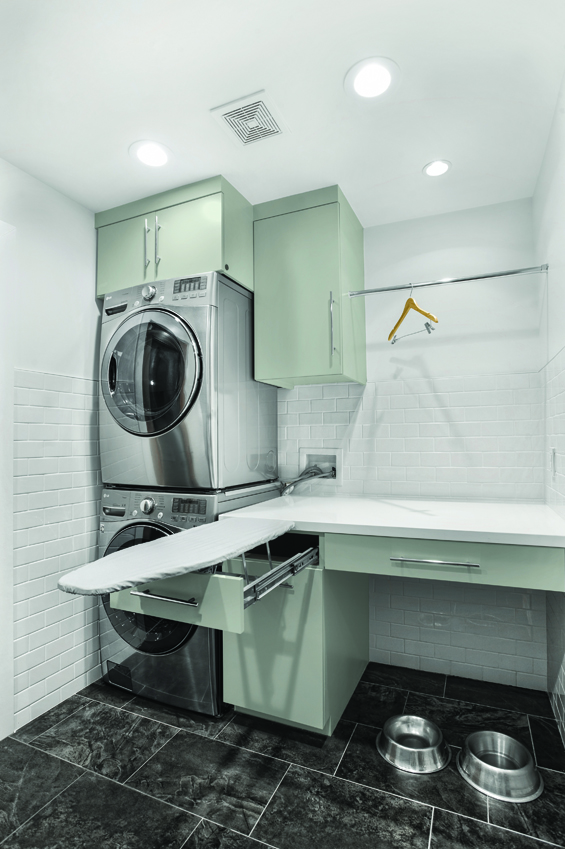
Traditional ironing boards consume valuable floor space even when folded. Wall-mounted or cabinet-integrated ironing boards offer a more elegant solution, remaining completely hidden until needed. Some designs pull out from narrow cabinets, while others fold down from wall-mounted housings.
Suspended Hanging Rods

The space beneath cabinets or open shelving presents an opportunity for hanging freshly ironed shirts or air-drying delicates. Suspended rods can be installed to pull out or swing down only when needed, then tuck away to maintain clear pathways in tight spaces.
Custom Cabinetry with Hidden Storage
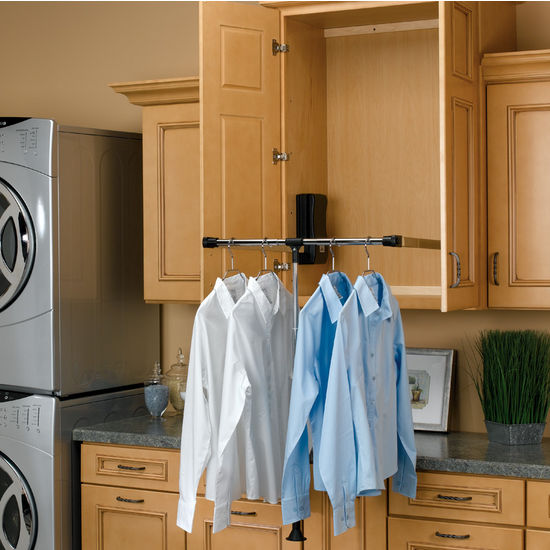
While potentially more expensive than off-the-shelf solutions, custom cabinetry designed specifically for your space’s dimensions and quirks can dramatically increase functionality. Built-in hamper compartments, pull-out sorting bins, and cabinets configured to awkward corners all maximize efficiency.
“Custom cabinetry doesn’t always mean expensive millwork,” notes contractor Ryan Peters. “Sometimes it’s as simple as modifying ready-made cabinets to fit unusual dimensions or adding custom doors to basic shelving.”
Corner Shelving and Floating Shelves
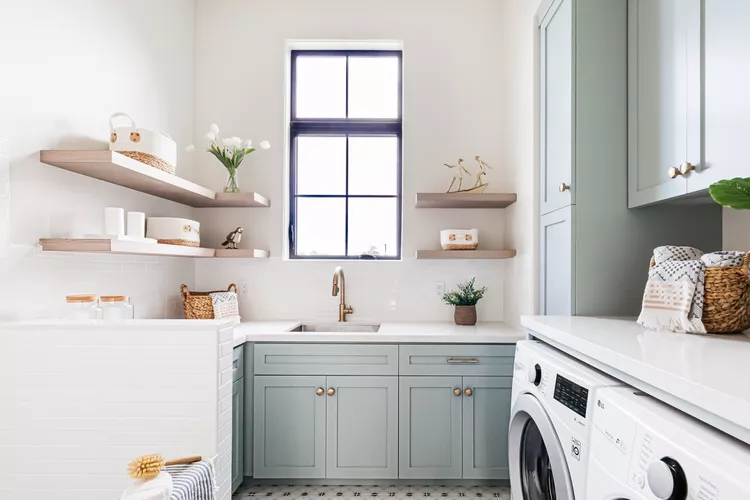
Corners often become dead space in small rooms, but corner shelving units can reclaim this area for storage. Similarly, floating shelves installed in otherwise unusable wall sections can hold laundry supplies, folded linens, or decorative elements that make the space more inviting.
Compact Sink with Storage Underneath
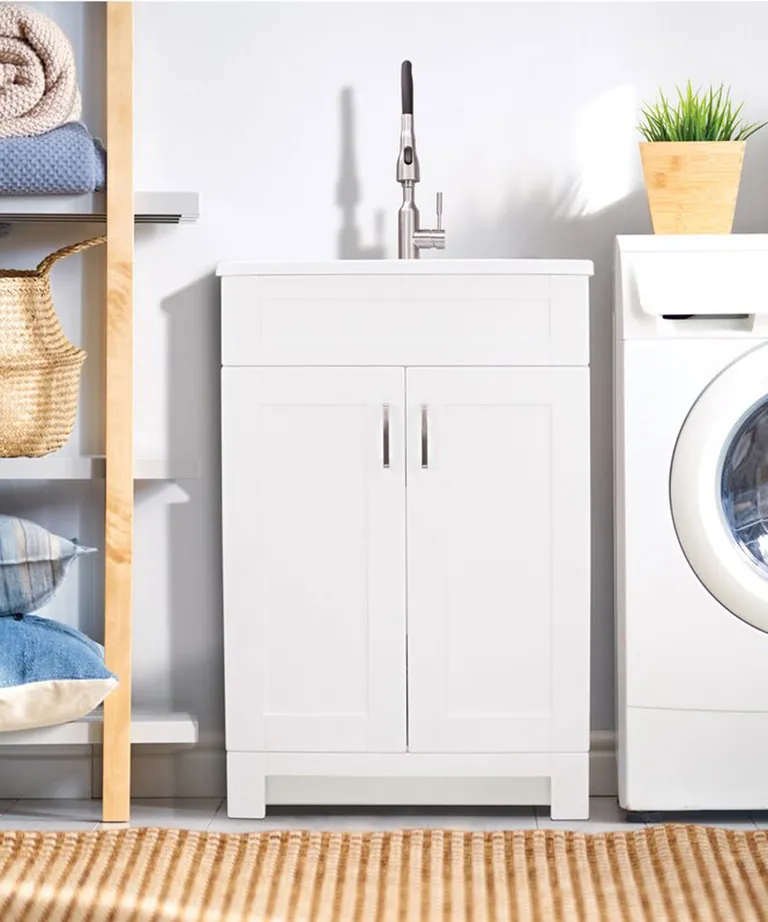
A small utility sink proves invaluable for hand-washing delicates, treating stains, or rinsing out cleaning tools. Look for wall-mounted models with built-in storage underneath, or consider a vanity-style sink cabinet that offers enclosed storage while supporting the basin.
Making the Most of Limited Space
Beyond specific storage solutions, several design approaches can make small laundry spaces feel larger and function better:
Light colors and good lighting make tight spaces feel more open and improve visibility for sorting and treating stains. Consider under-cabinet lighting to illuminate work surfaces without requiring overhead fixtures that might make ceilings feel lower.
Multi-tasking accessories like magnetic boards that serve as both message centers and supply holders help minimize wall clutter while maximizing functionality.
Strategic planning of workflow ensures that even the smallest laundry space supports efficient movement through the washing, drying, and folding process.
The most successful small laundry rooms aren’t necessarily those with the most square footage—they’re the ones where every element has been thoughtfully chosen to address specific needs while respecting spatial limitations. With creative customization, even the most challenging laundry space can become a model of efficiency and organization.
